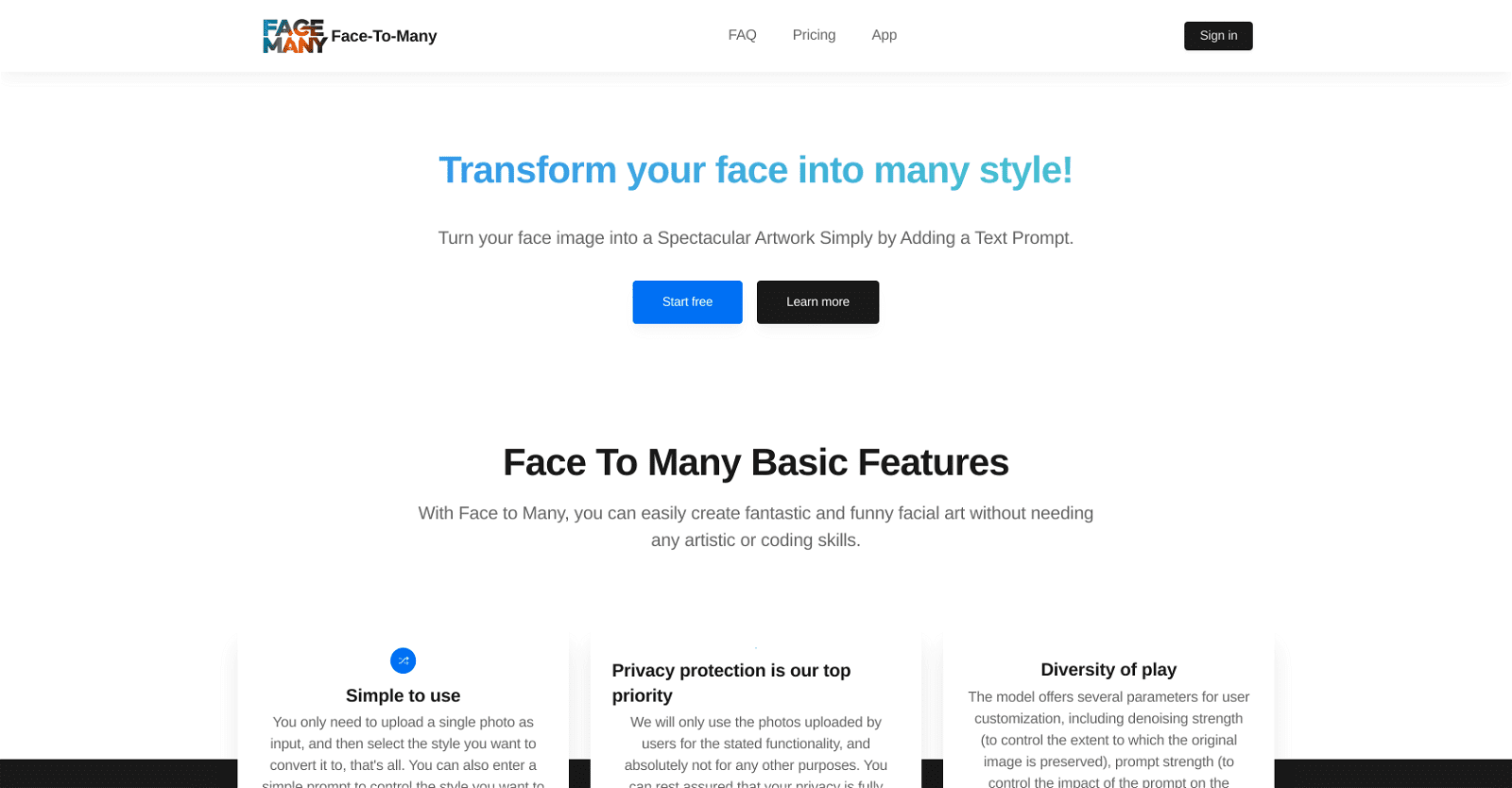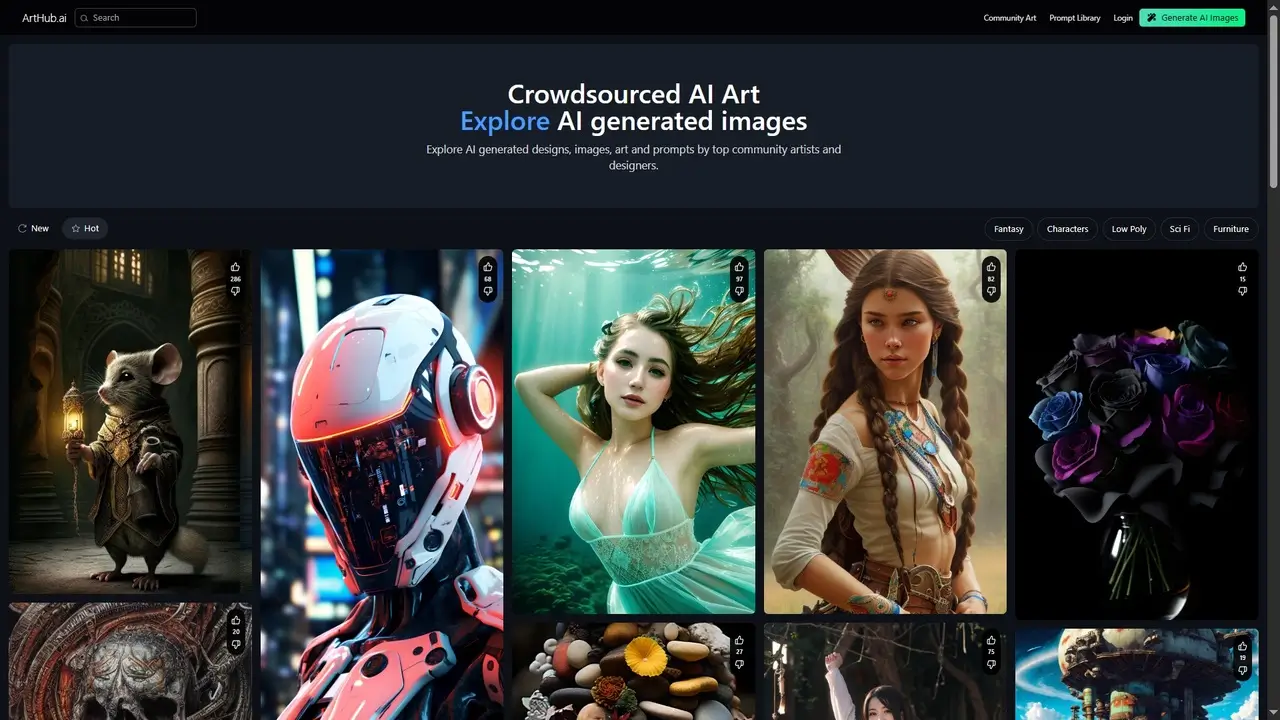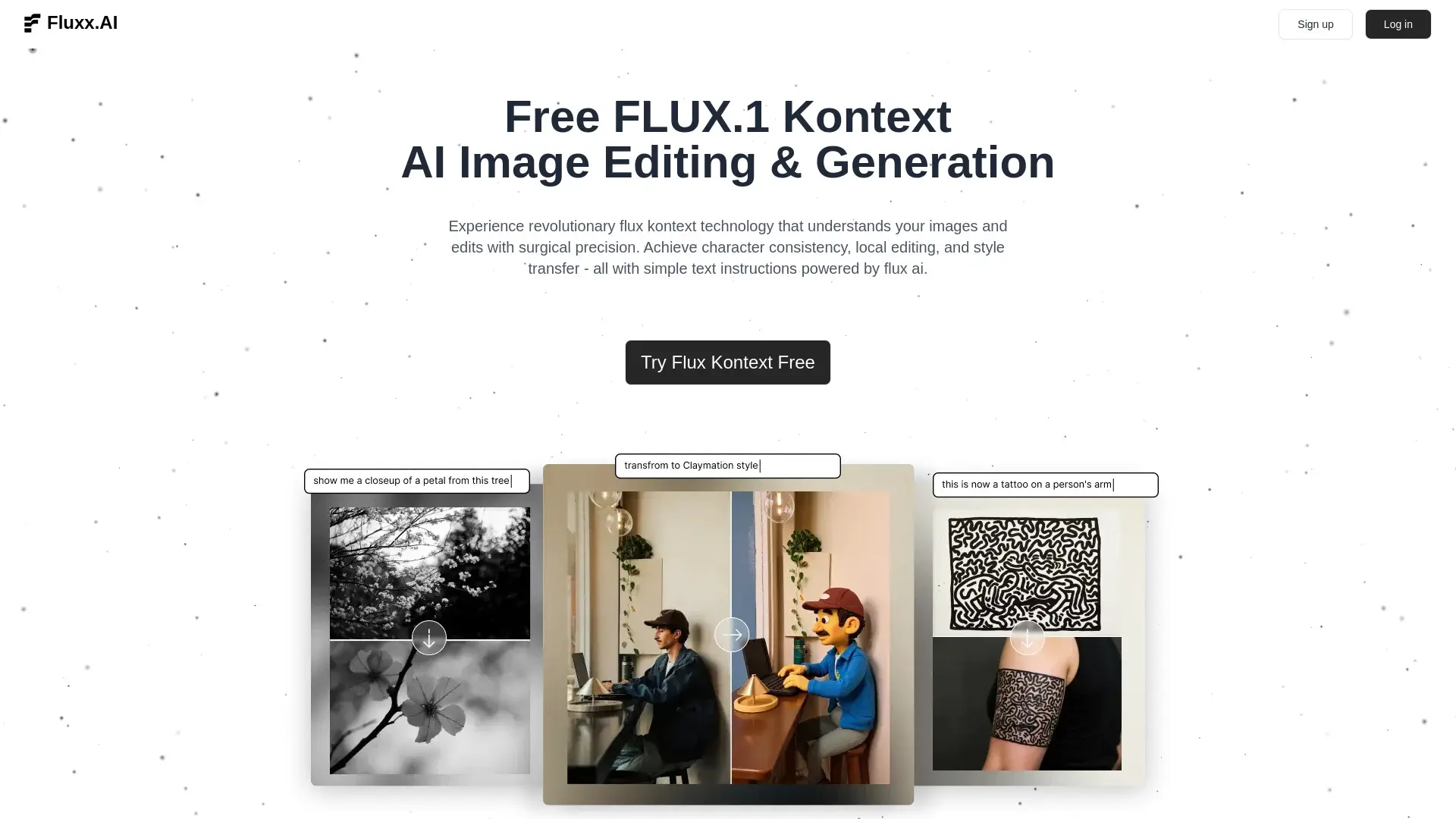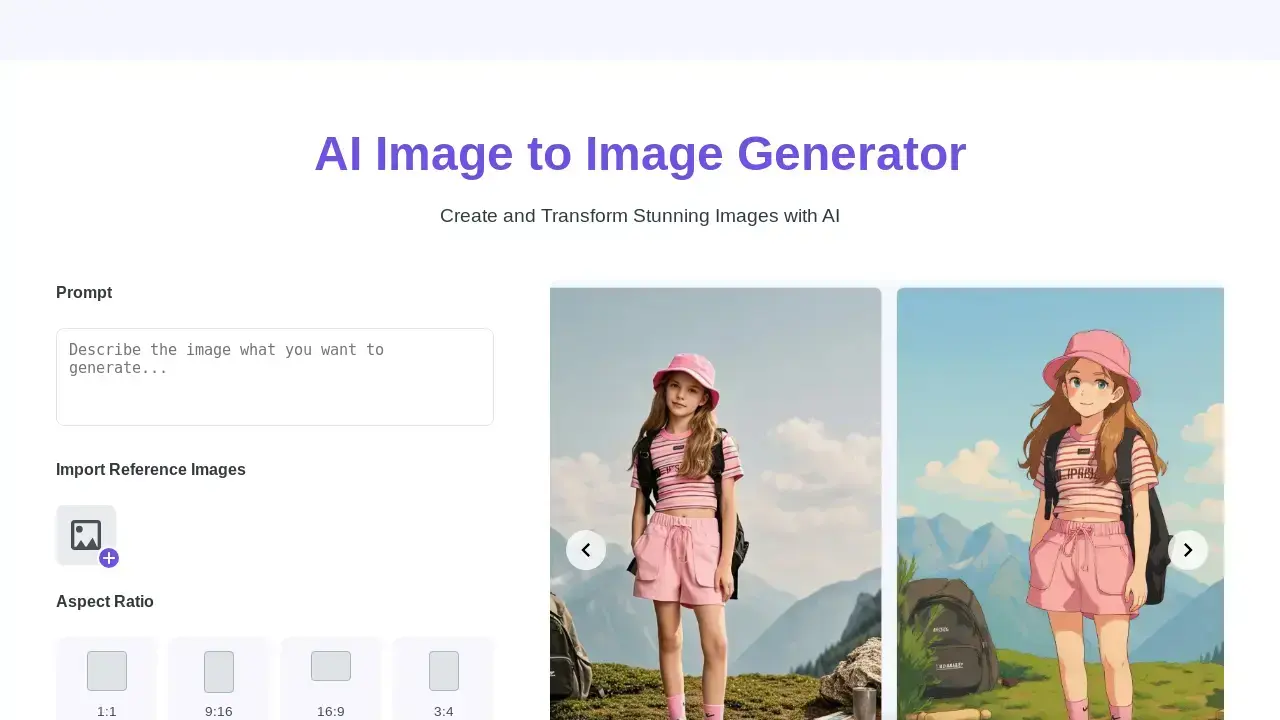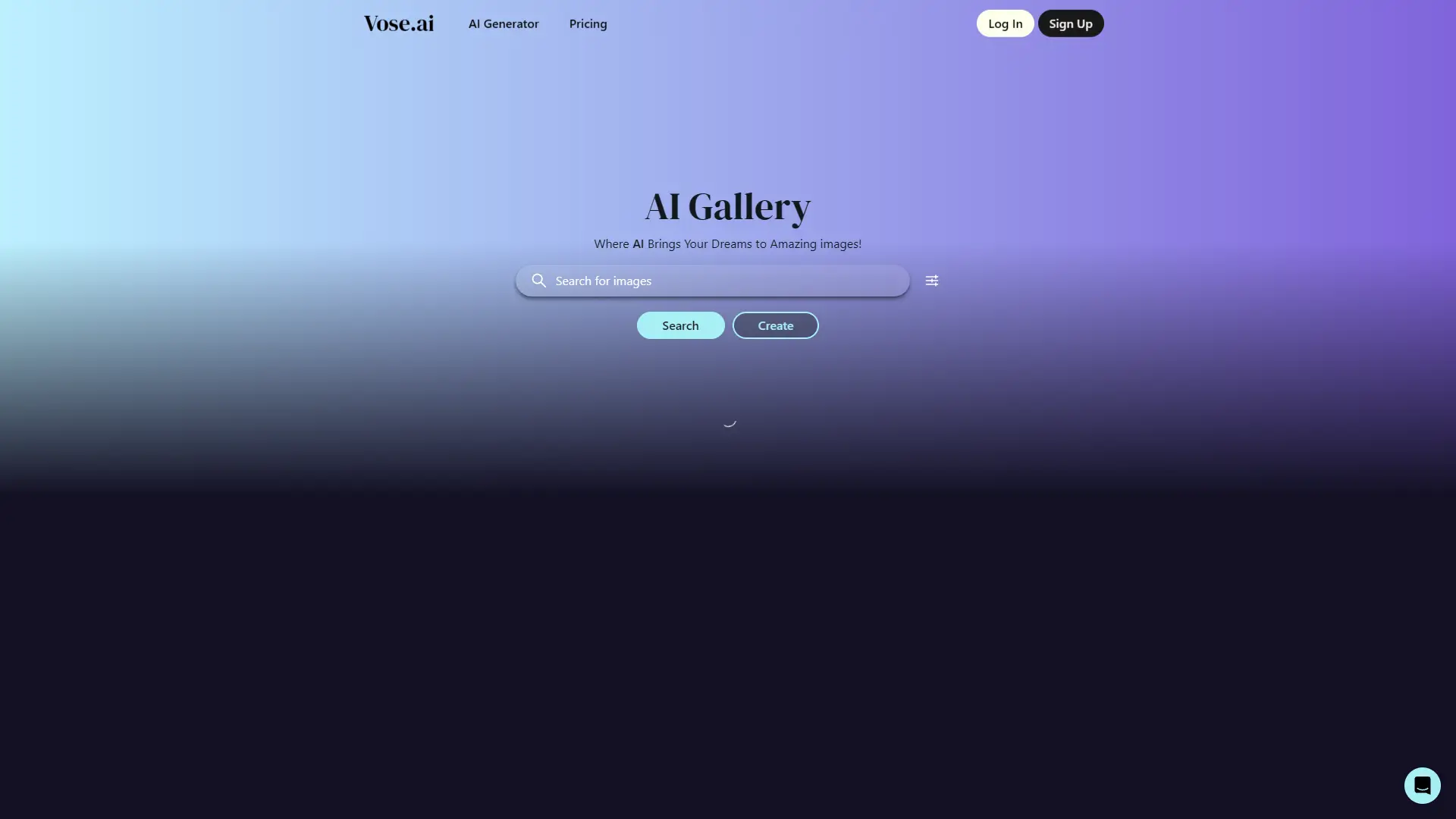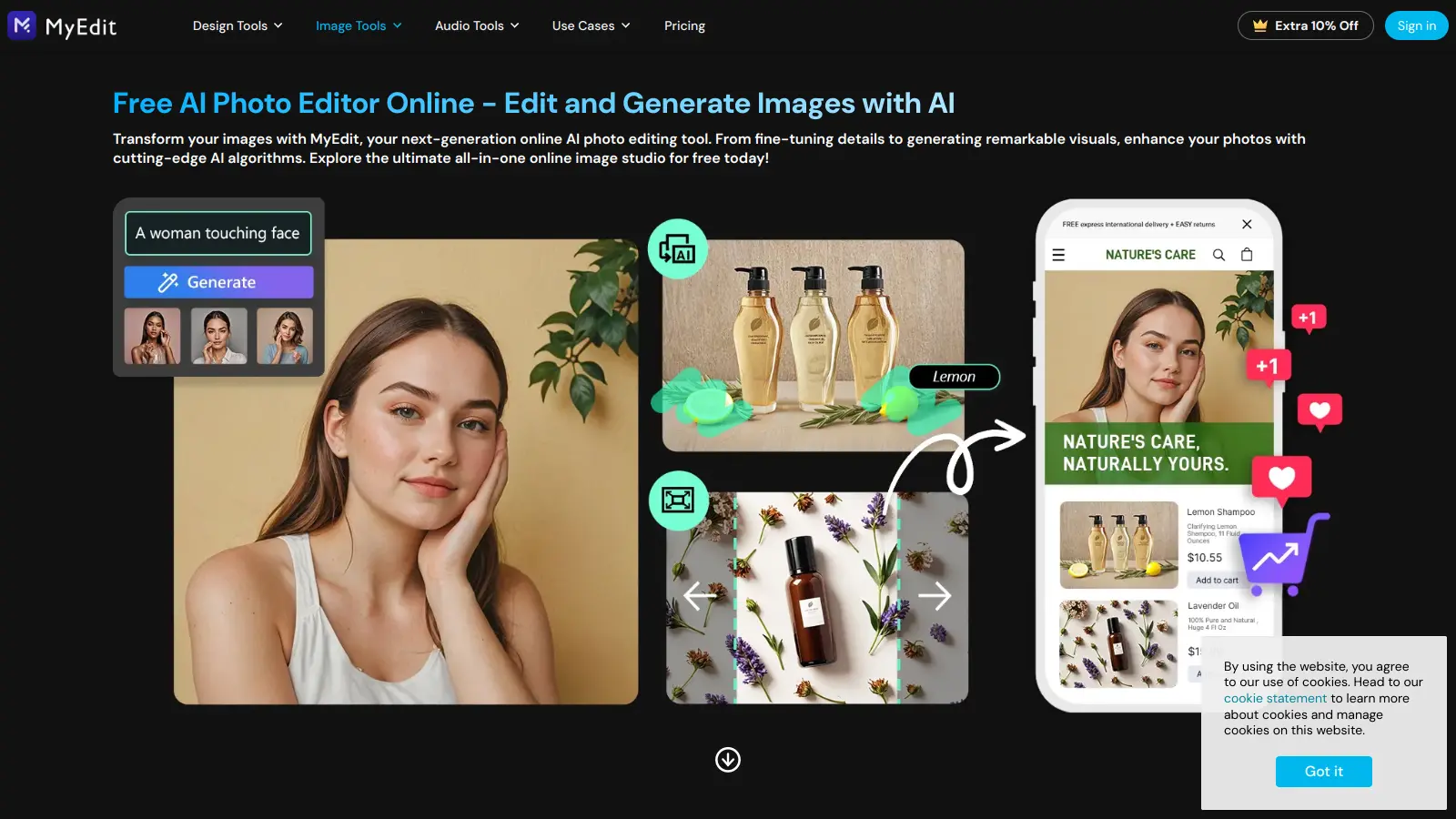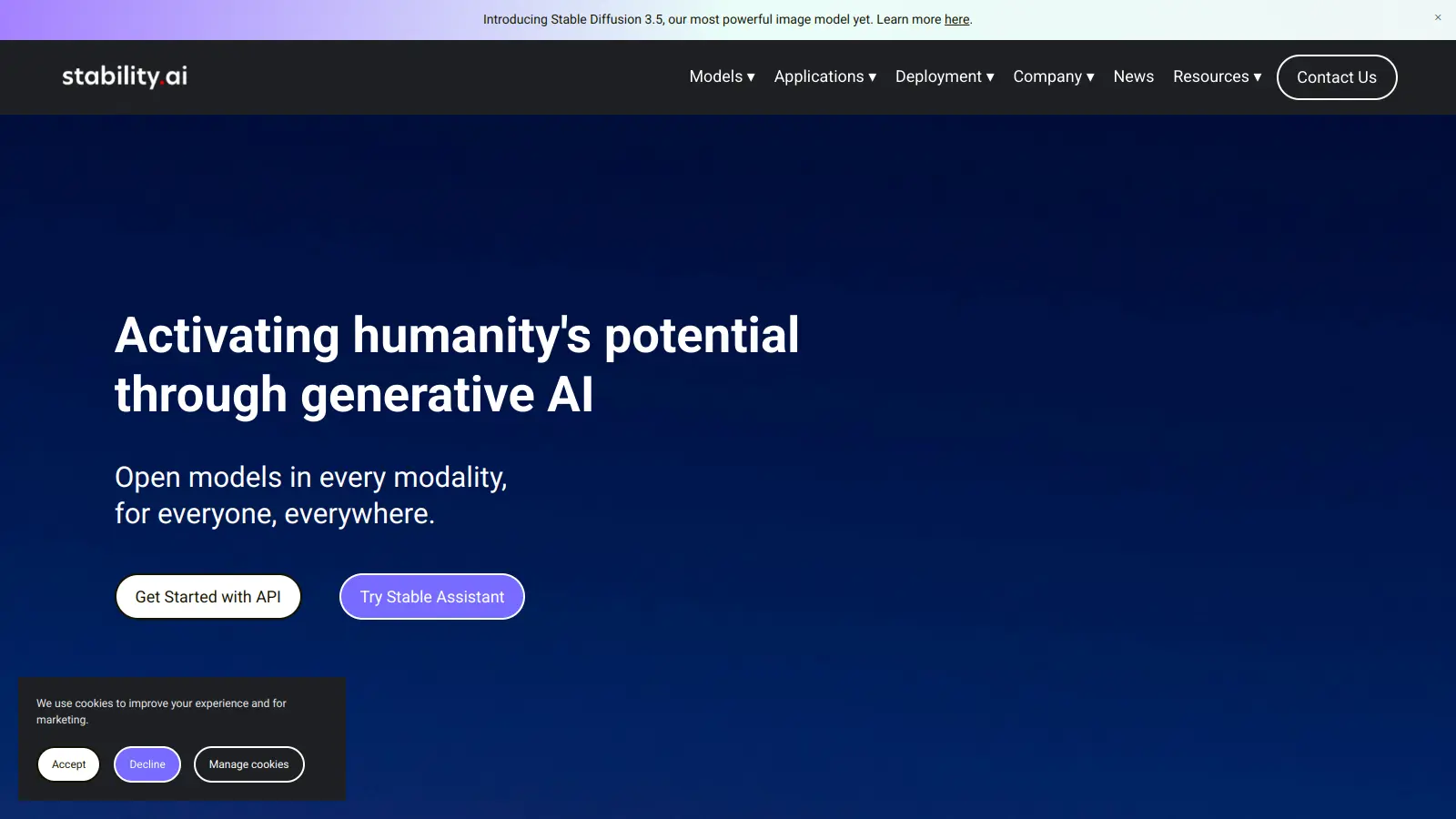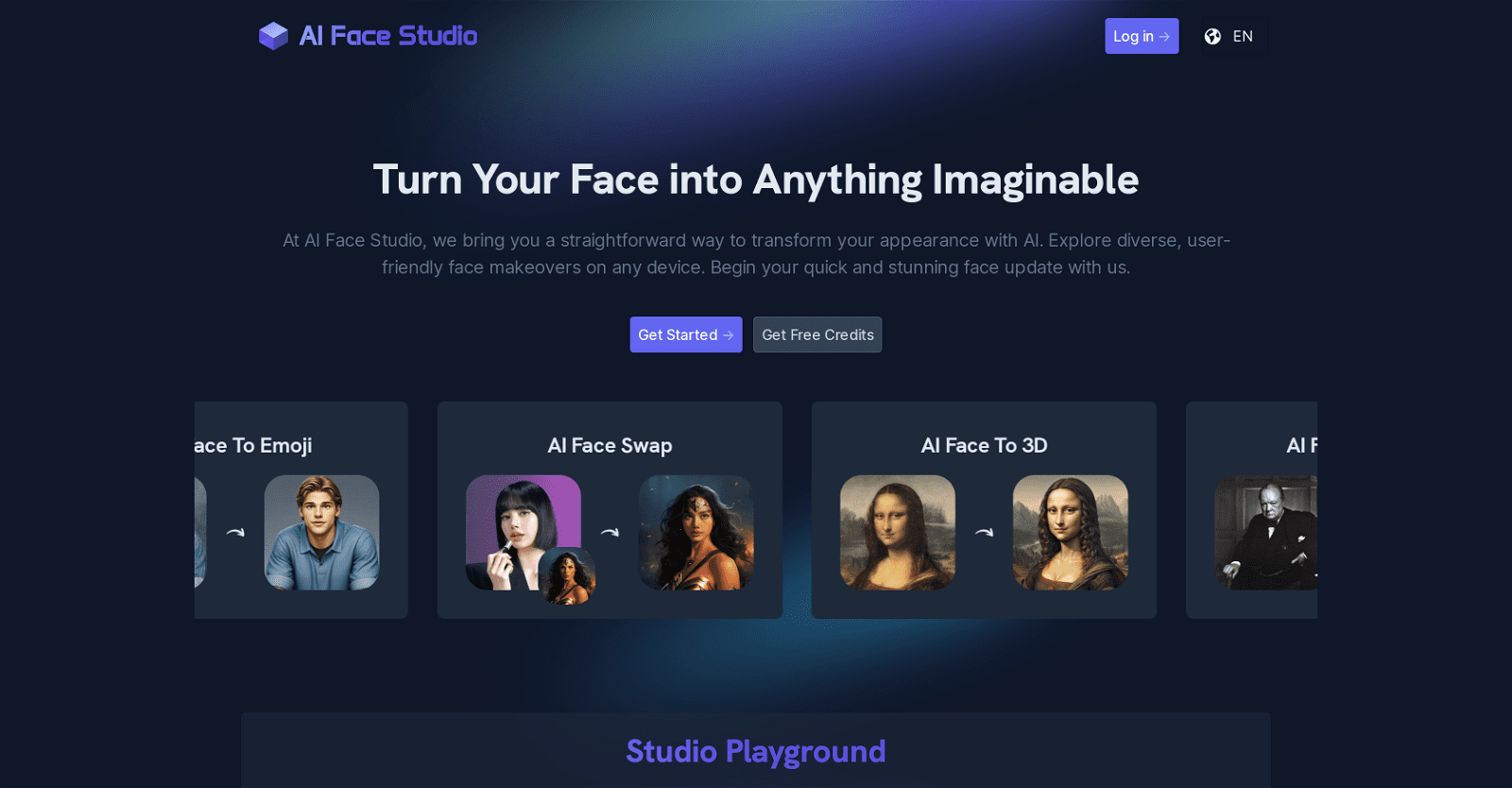Face to Many is an AI-based tool revolutionizing image transformation by converting facial images into various styles such as 3D, emoji, pixel art, video game style, claymation, or toy style.
With Face to Many, users need only a single photo as input, which is then seamlessly transformed into the desired style. The tool offers an array of user-friendly customization settings, including denoising strength, prompt strength, depth control strength, and InstantID strength.
Moreover, Face to Many introduces a unique negative prompt feature, allowing users to specify undesirable elements to be avoided in the final output. This enhances overall control and helps narrow down the desired result.
Addressing privacy concerns, Face to Many assures users that uploaded photos are solely used for the stated functionality and no other purposes, safeguarding users’ privacy.
Currently open-source, with its code accessible on GitHub, Face to Many encourages collaboration and ongoing development. While in a research preview state, it holds immense potential for future commercial applications.
Envisioned for use in creative industries, Face to Many promises rapid and diverse video content creation, benefiting fields such as filmmaking, advertising, and digital art.
More details about Face to Many
1. How could creative industries benefit from Face to Many?
Creative industries could leverage Face to Many for rapid and diverse video content creation. It offers unique styles such as 3D, emoji, pixel art, and more, making it valuable for filmmaking, advertising, digital art, and other creative endeavors.
2. What purpose does the negative prompt feature in Face to Many serve?
The negative prompt feature in Face to Many allows users to specify elements they wish to avoid in the final output. This enhances control over the outcome, ensuring the desired result aligns with the user’s preferences.
3. What is the role of denoising in Face to Many?
Denoising in Face to Many preserves the quality of the original image during the transformation process. It controls the extent to which the original image’s quality is maintained, ensuring optimal results.
4. Is Face to Many open-source?
Yes, Face to Many is open-source. Its code is available on GitHub, fostering collaboration and ongoing development within the community.
